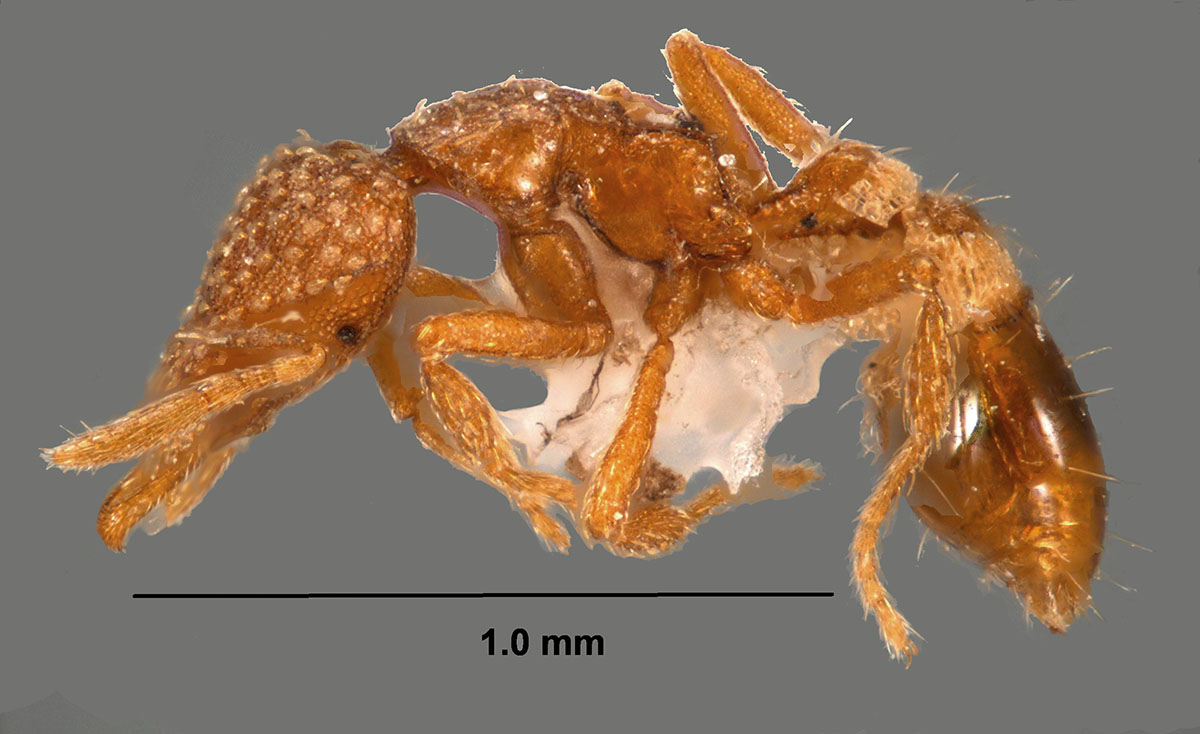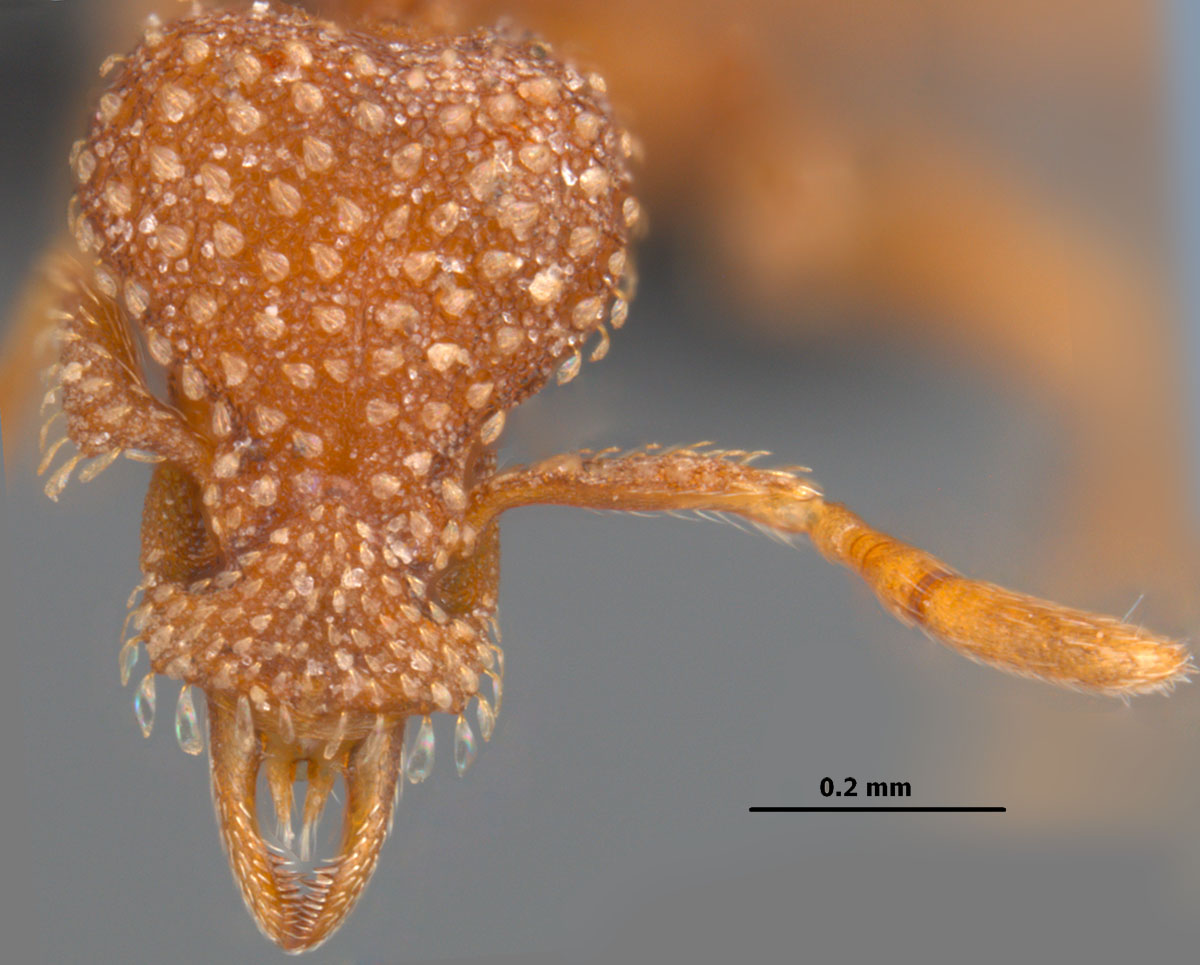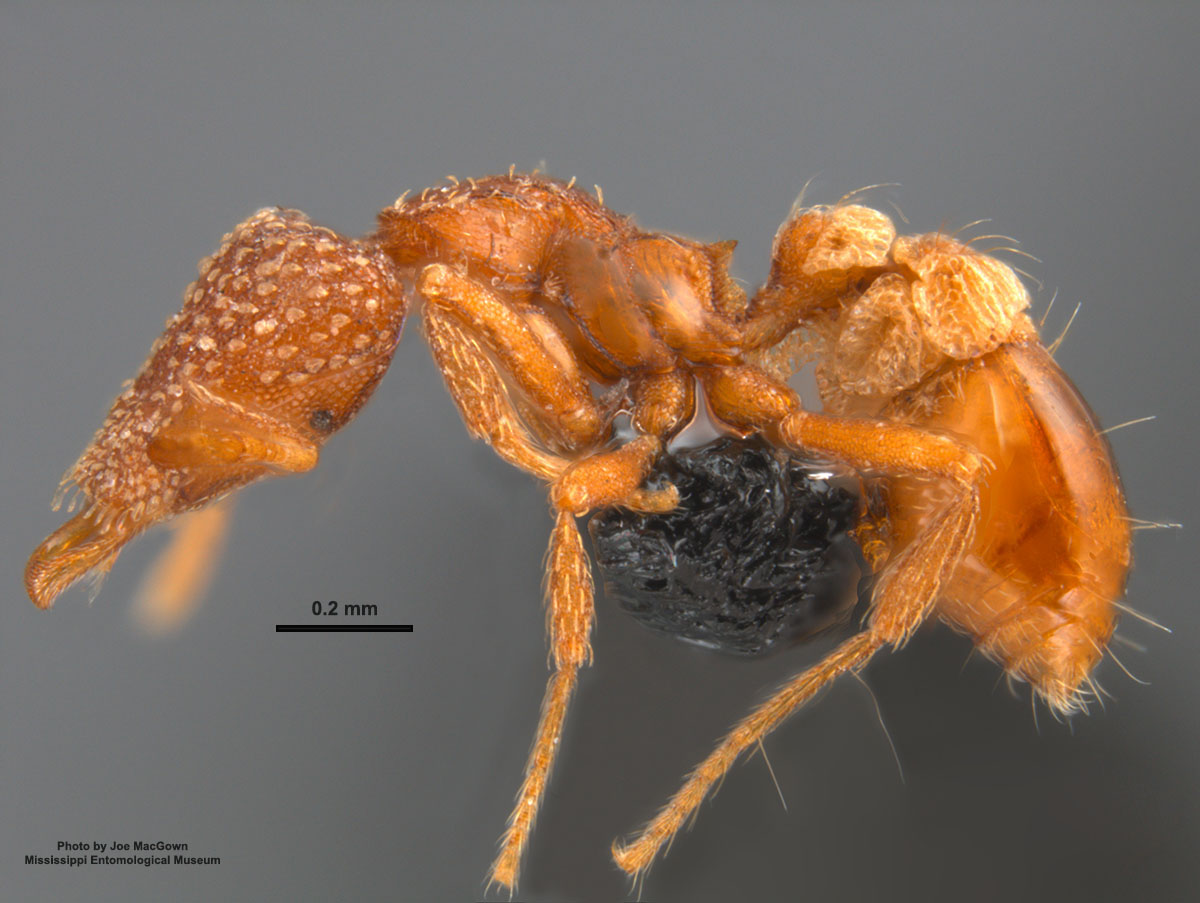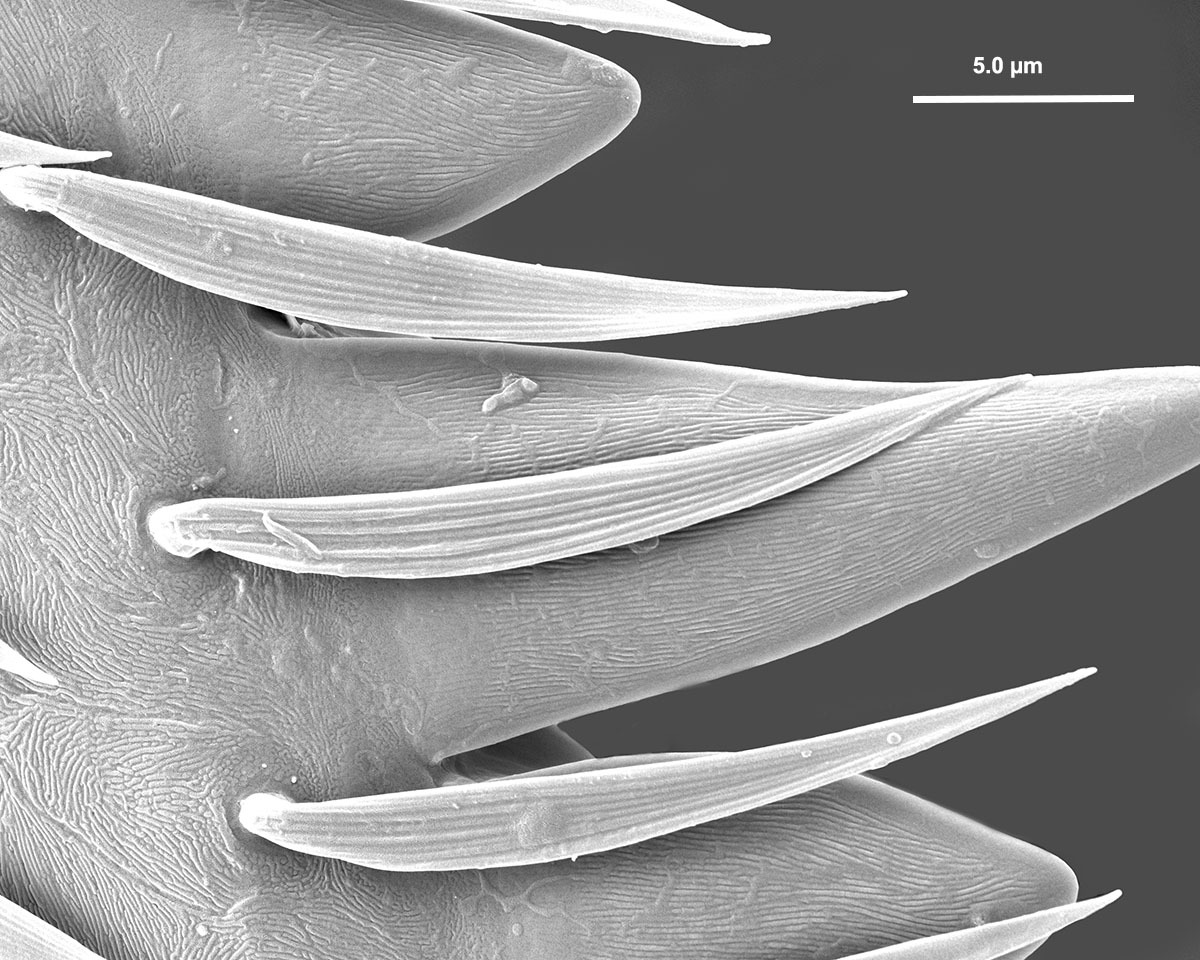Subfamily MYRMICINAE by Joe A. MacGown, last updated on 19 November 2013 |
|
Strumigenys angulata, full face view of worker (click image to enlarge) Photo by Joe MacGown |
Strumigenys angulata, profile view of worker (click image to enlarge) Photo by Joe MacGown
|
Strumigenys angulata, full face view of worker (click image to enlarge) Photo by Joe MacGown
|
Strumigenys angulata, profile view of worker (click image to enlarge) Photo by Joe MacGown
|
Strumigenys angulata, full face view of worker (click image to enlarge) Photo by Joe MacGown
and Richard Brown |
Strumigenys angulata, closeup of mandibles of worker (click image to enlarge) Photo by Joe MacGown
and Richard Brown |
Strumigenys angulata, closeup of mandibles of worker (click image to enlarge) Photo by Joe MacGown
and Richard Brown |
Strumigenys angulata, spongiform tissue on waist of worker (click image to enlarge) Photo by Joe MacGown
and Richard Brown |
Introduction Taxonomic History (provided by Barry Bolton, 2013) Identification. This species can really only be confused with one other species, S. pergandei, S. angulata differs by having the anterior and lateral margins of the clypeus meeting in angular corners (see full face photo above), rather than rounded curves (as in S. pergandei); the second tooth on the mandible is longer than the basal tooth, whereas, in S. pergandei, the basal tooth is longer than the second or third tooth; the postpetiolar disc lacks posteriorly curved spatulate hairs (present in S. pergandei); and the mesonotal dorsum has a pair of erect simple hairs (lacking in S. pergandei). Biology and Economic Importance Distribution Literature Cited Bolton, B. 1999. Ant genera of the tribe Dacetonini (Hymenoptera: Formicidae). Jour. Nat. Hist. 33: 1639-1689. Bolton, B. 2000. The ant tribe Dacetini. Mem. American Entomol. Inst. 65:1-1028. Bolton, B. 2013. Bolton World Catalog Ants. Available online: http://www.antweb.org/world.jsp. Accessed 16 April 2013. Brown, W. L., Jr. 1948. A preliminary generic revision of the higher Dacetini (Hymenoptera: Formicidae). Trans. Am. Entomol. Soc. 74: 101-129. Brown, W. L., Jr. 1953. Revisionary studies in the ant tribe Dacetini. Am. Midl. Nat. 50: 1-137 Creighton, W. S. 1950. The ants of North America. Bulletin of the Museum of Comparative Zoology 104:1-585. Smith, M. R. 1931c. A revision of the genus Strumigenys of America, north of Mexico, based on a study of the workers (Hymn.: Formicidae). Annals of the Entomological Society of America 24:686-710. Smith, M. R. 1947. A generic and subgeneric synopsis of the United States ants, based on the workers. American Midland Naturalist 37: 521-647. Smith, M. R. 1951. Family Formicidae. Pp. 778-875 in: Muesebeck, C. F.; Krombein, K. V.; Townes, H. K. (eds.) 1951. Hymenoptera of America north of Mexico. Synoptic catalogue. United States Department of Agriculture. Agriculture Monograph 2: 1-1420. Wilson, E. O. 1953. The ecology of some North American dacetine ants. Annals of the Entomological Society of America 46: 479-497. |
|










